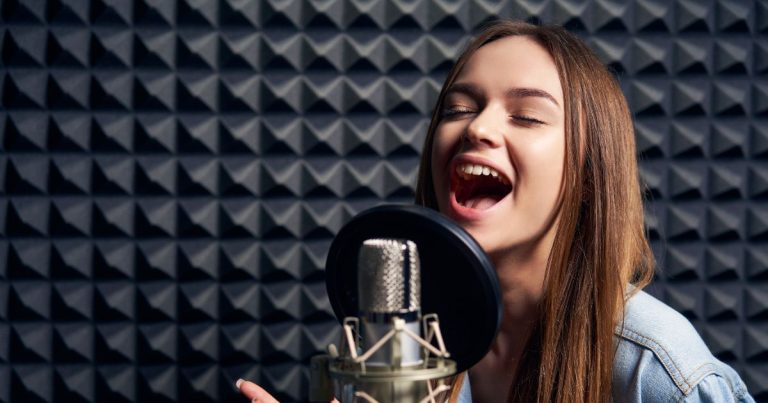Singers who want to deliver powerful, soaring vocals at the higher end of their range (like Beyonce) need a well-developed head voice.
So what is it, and why is it useful for singers to be able to access it? Line Hilton, BAST’s founder, explains all in her useful guide to head voice on the Singing Teachers Talk podcast.
Here’s a taster of what she had to say.
What is head voice?
“What I feel and hear when I’m in head voice is a higher resonance and a cleaner sound with less bottom end,” Line says. “It can be quite a loud, piercing sound depending on how you’re tuning your acoustics or a lighter sort of sound.”
And now for the more complicated bit.
Confusingly, some people call head voice falsetto, mainly when they’re talking about the male tenor voice. But Line thinks there’s a distinct difference between head voice and falsetto. (She considers falsetto to be the whistle tone closely associated with Mariah Carey.)
“For me, with head voice, especially at the beginning, there is thyroarytenoid (TA) engagement, so we’re getting a clean, connected sound,” Line says. “It’s not a light, breathy sound. There’s definitely a decent amount of vocal fold connection that gives it a solid sound.”
Terminology
As Line mentioned in this previous interview on chest voice, the vocal world is not united when it comes to terminology. In relation to head voice, it is sometimes also called loft or M2 thin folds.
What vocal range is a cisgender singer covering when they use head voice?
“Anything from D5 up is heading into head voice territory if you’re not belting,” Line says. “By the time you get to G5, you’re definitely in what I term the upper range head voice – some people call it loft.”
Why is it important for singers to develop head voice?
It’s helpful in terms of balance, flexibility and colour variation. “Some singers may never work with head voice and still maintain a healthy voice and a long career,” Line says.
“If you’re writing your own music, you may choose never to go into head voice. An artist like Adele, for example, tends to sit at the top of her chest voice range.
“But for balance and health, it’s good to be able to access all areas of your voice. One reason that Adele and singers like her get themselves in trouble is that they’re writing in a range where they can be more TA-dominant and push that to its limits.
“But over time, that can be wearing and potentially damaging to the vocal folds. If you know how to let go of your TA and engage more CT (cricoarytenoid) and use more of an acoustic shift to get that bigger sound, you’re less likely to do any damage.” Artists who have mastered this skill include Beyonce and Ariana Grande.
Who tends to have a harder time accessing head voice?
Men are more likely to struggle with head voice because, typically, they’re not used to speaking in that area, along with singers who have developed a more TA-dominant style.
Pubertal males and singers with a cold, upper respiratory infection or vocal pathology might also find it challenging.
In terms of genres where head voice is commonly used, you’ll hear it in English folk, R&B, Disney and musical theatre.
Learn more
Find out more about head voice by listening to the Singing Teachers Talk podcast where Line also discusses:
- The best exercises to develop head voice.
- The role the tongue plays in head voice.
- A recommendation for a great app which helps you finds songs for your vocal range.
Read more
If you found this guide to head voice useful, read our useful chest voice blog here.




